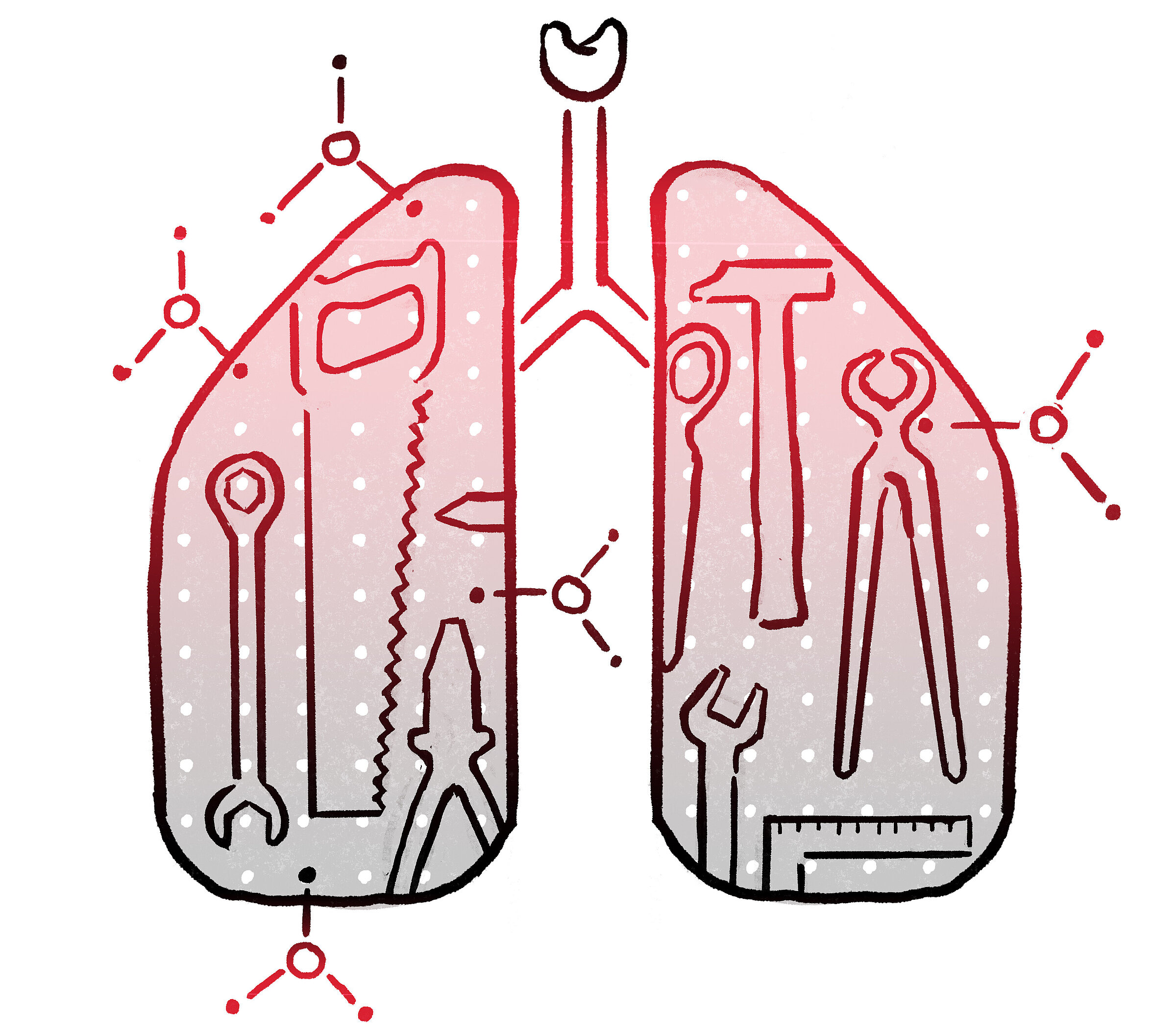Cystic fibrosis is a severe, chronic genetic disorder that mainly affects the lungs. It primarily impacts the way the body produces mucus. Every day we breathe in millions of bacteria, allergens, and viruses. Normally, our lungs produce mucus to absorb and remove such foreign particles.
Cystic fibrosis patients, however, produce mucus that is too dry, thick, and sticky, which prevents it from properly doing its job. This abnormal mucus then builds up, clogging the airways and creating a perfect breeding ground for inhaled bacteria. Over time, it can result in chronic infections and a strong inflammatory response, which gradually cause permanent damage to the lungs. Most cystic fibrosis sufferers exhibit breathing problems in the first few months of life and eventually succumb to respiratory failure.
The disease is caused by an abnormality in chloride channels, which are vital to help transport salt and water across mucous membranes. Before these channels move – or traffic – to the cell surface, they need to fold into the right shape. A genetic mutation prevents this from happening, resulting in channels that fail to reach the cell membrane and function properly.
I began studying medicine in the spring of 1990, just a few months after the genetic cause of cystic fibrosis had been discovered. At the time, researchers thought that if we were able to identify the genetic defect, it would be possible to simply introduce the corrected gene sequence into the body, repair the defective gene, and cure the disease. Like everyone else, I was convinced this approach could work. Disappointingly, though, in practice it has remained impossible to achieve. Scientists have managed to replace faulty genes in a lab, but fixing such defects in affected cells inside the human body remains a formidable challenge.
The initial euphoria was soon followed by a harsh dose of reality – not least because we soon discovered over 2,000 different mutations in the cystic fibrosis gene that can potentially cause the disease. Researchers initially focused on the underlying mechanisms that prevented the chloride channels from working properly. They then tested hundreds of thousands of substances to see if they improved the function of channels in cystic fibrosis sufferers.
Then, just a few years ago, there was a breakthrough, and our team here in Berlin was crucial to making it happen: Thanks to a treatment combining three small molecules, which are much smaller than protein molecules, it is now possible to effectively repair this channel defect.
These three molecules combat cystic fibrosis right where it takes effect, i.e. in the cell. Two (known as “correctors”) dock with the defective protein in the cell like a sticking plaster. This then allows it to fold normally so that it can move to the cell membrane. Once in place, the third molecule in this trio – the “potentiator” – gets to work helping the chloride channels do their job.
Previous treatments, such as antibiotics or inhalations to clear mucus, helped cystic fibrosis sufferers live beyond childhood to the age of around 40. This new causal treatment, which patients take as a tablet, will most likely allow us to make similarly impressive strides in improving the quality of life and life expectancy of adults with existing lung disease.
If in the years to come we are able to offer this treatment to infants, or even newborn babies, there is a reasonable chance that these patients will enjoy an almost normal life expectancy. This would mean that for 90% of sufferers who have a specific gene mutation, we could turn a previously deadly disease into an easily treatable chronic condition.
Already now, this model is being used to develop treatments for other rare, chronic lung diseases. What this progress shows is that once we fully understand the responsible genetic defect and a disease’s underlying mechanisms, we can develop targeted therapies.


